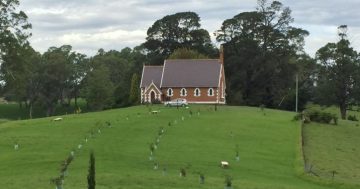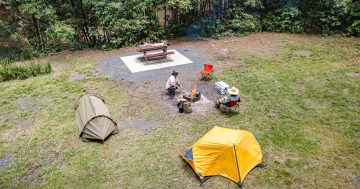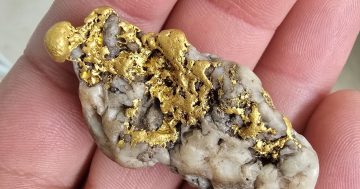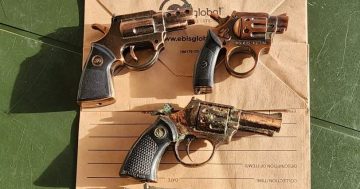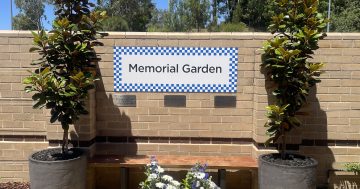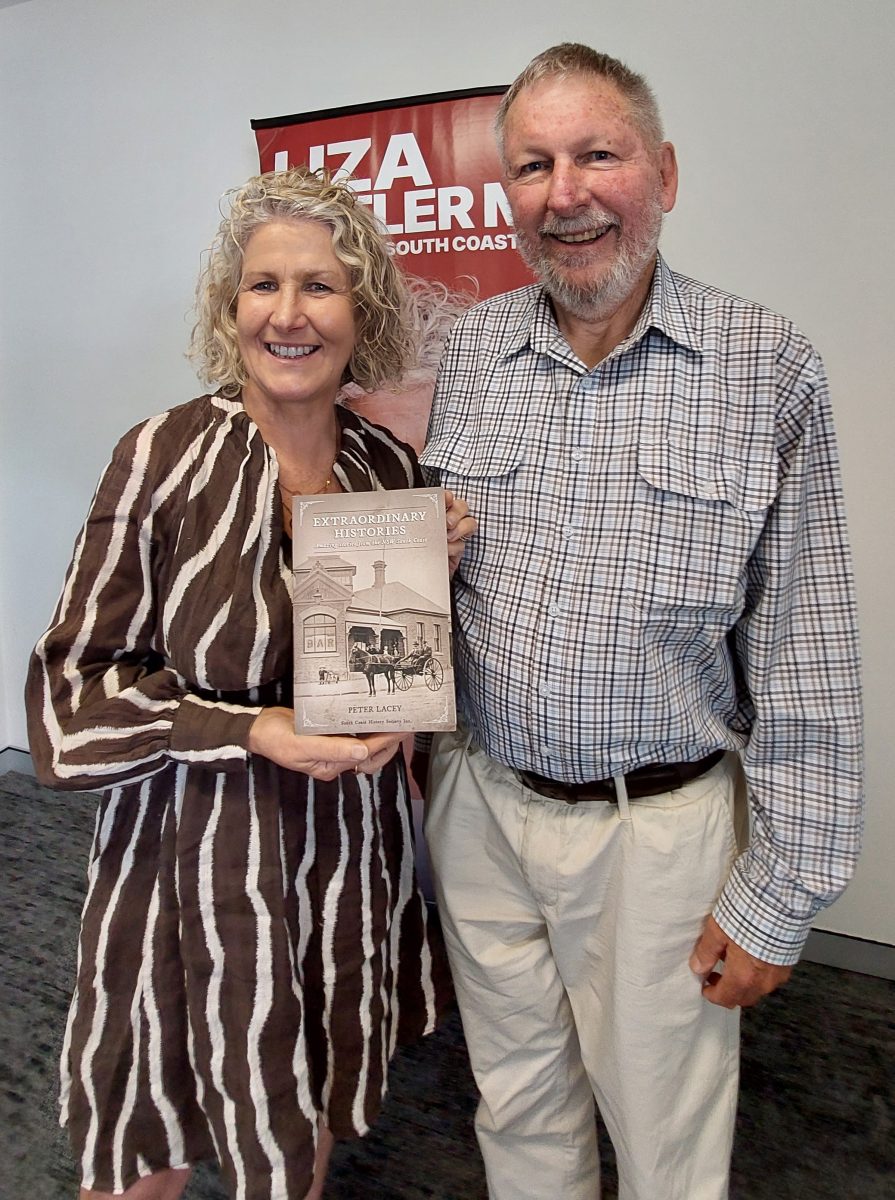
Member for South Coast Liza Butler with the new book, Extraordinary Histories, by Peter Lacey. Photo: Supplied.
Peter Lacey tells a good yarn – have you heard the one about the lighthouse, the dodgy builder and one Flora MacKillop, the mother of the saintly Mary?
The story goes that back in the early 1860s too many ships were running aground at Jervis Bay so a builder was contracted to construct the Cape St George lighthouse. But the builder decided the agreed location was too far from the quarry where he had to transport building materials, so he moved it (the site). As a result, ships could barely see the light from the left approach and not at all from the right.
The lighthouse stood from 1860 to 1889 and in that time, 23 ships were wrecked in the vicinity of Jervis Bay. The authorities eventually twigged, so they built another lighthouse, one that could actually be seen by boats.
“But they had to get rid of the old one – so the navy ended up using it for target practice,” Peter said.
So what’s the Mary MacKillop angle you ask? Turns out her mother was aboard one of the many boats that were wrecked coming into the bay – the Ly-ee-mo, which met its end in 1886.
“The story goes that hers was the only body that remained intact after the shipwreck,” Peter said. “Apparently Mary MacKillop saw that as a sign from God.”
Peter has been writing such stories about the NSW South Coast for years for Recollections magazine, which he puts together as president of the South Coast Historical Society Inc.
Now retired and living on his own piece of paradise at Quaama, near Bega, he describes himself as more of a communicator than a historian – but it could just as easily be writer. He has just published Extraordinary Histories, a book he describes as the first history of the entire region – from Kiama down to the Victorian border.
“Hundreds and hundreds of histories about small areas along the South Coast have previously been written, mostly by or for the 16 history societies that are based in the area,” he said. “But this is the first-ever history of the whole area from Kiama to the Victorian border to have been issued.”
He said the history of the entire South Coast had mostly been determined by the geography of the area.
“Everywhere along the coast we have the sea to the east – and this has not always been readily or easily accessible from land. That’s why so much of our history here is about the sea – and shipwrecks.”
He said the shipwreck that took the life of Flora MacKillop, according to local legend, was because the ship’s captain was somewhat distracted – “he was either thought to be drinking … or entertaining a young woman in his cabin”.
Before moving to Quaama and retiring on the family’s five-acre property, Peter worked as a statistician and market researcher, with corporate giants and on royal commissions.
“I suppose I now see myself more as a promoter of the South Coast rather than its historian. My background is all about listening to people and interpreting what they’re saying.
“I’ve found the history of the South Coast to be extraordinarily interesting,” he said.
READ ALSO: ‘There’s my bus’: Eden students have their artwork displayed on shuttles
“It’s full of engaging stories of shipwrecks, bushrangers, gold rushes, fires and floods of course, some extraordinary promises that were made to the area that were never fulfilled, and some incredibly stupid decisions that significantly affected the area.
“The challenge we had, therefore, was to decide which of all the available stories should be included in the book and which could be left out.”
He said Extraordinary Histories began with “conventional history in chronological order – the geological history of the area, information about the Yuin nation, details of early exploration and settlement – but rapidly dissembles into a collection of somewhat random, but fascinating stories about the area. This ensures the book is very readable and is a million miles away from being a textbook type of history.”
Extraordinary Histories is available from bookshops, newsagents, museums and visitor centres throughout the South Coast.








